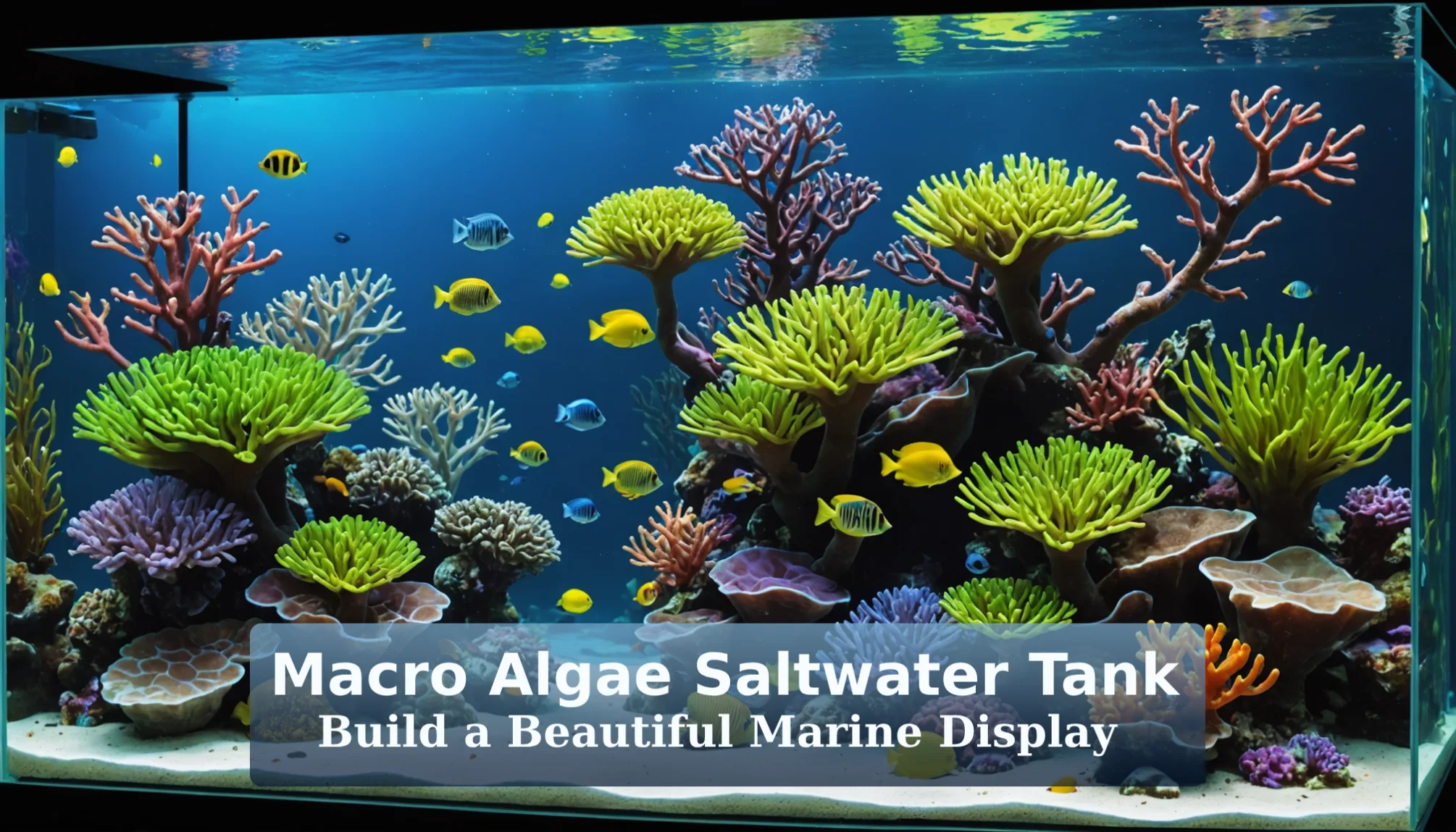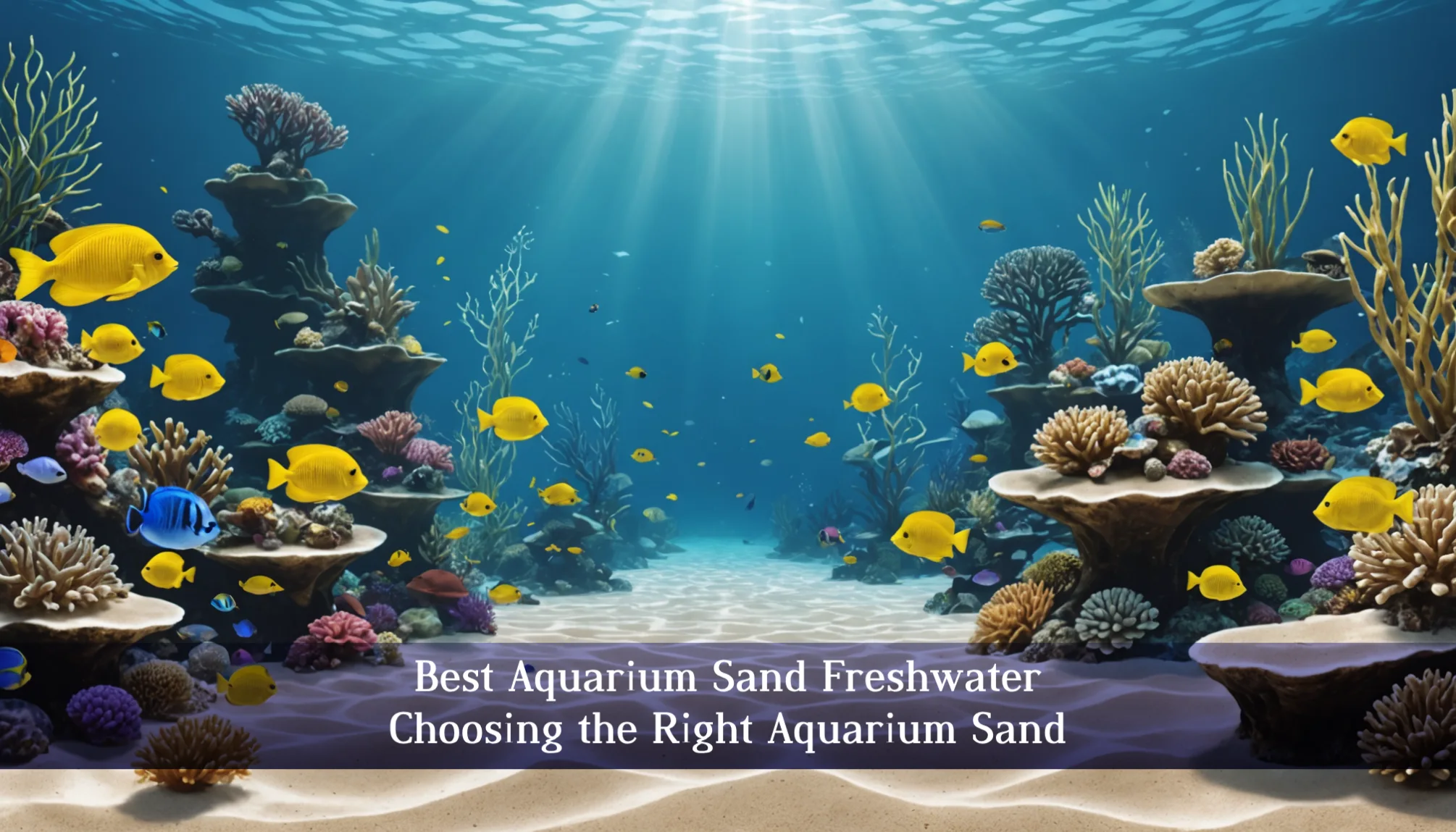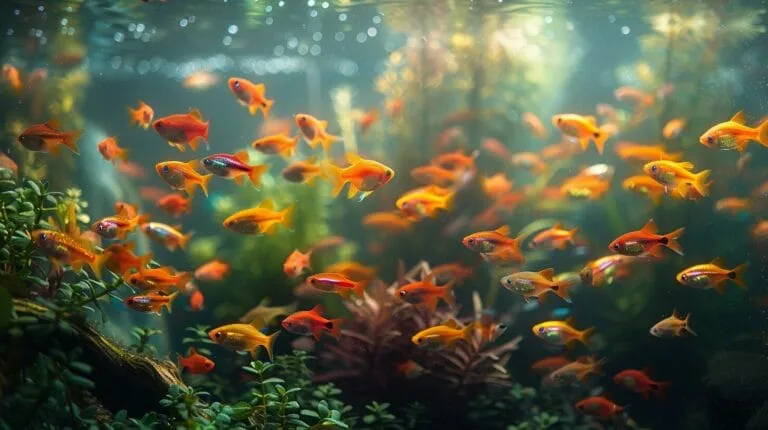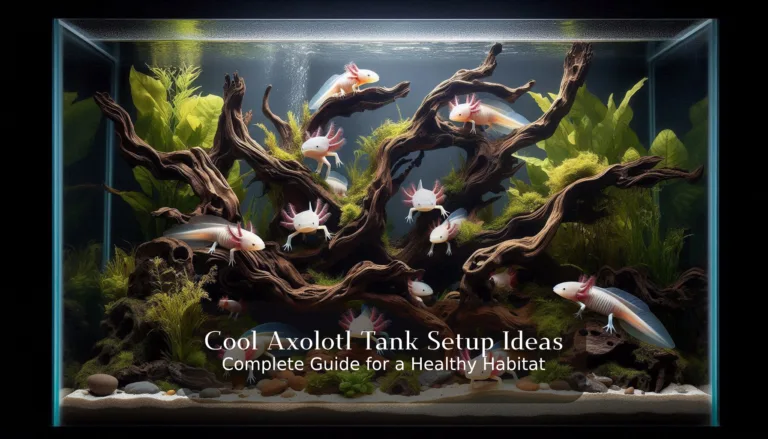Have you ever wondered how plants can make your fish tank healthier? A Macro Algae Saltwater Tank is a fantastic way to create a vibrant underwater world while improving water quality! These unique tanks use beautiful green plants called macroalgae that help control harmful nitrates and provide a natural food source for your fish. Not only do they look great, but they also play an essential role in keeping your marine environment thriving.
If you’re not careful about your tank’s balance, you might end up with excess nutrients, which can lead to pesky algae blooms. In this article, we’ll dive into what macroalgae are and why they’re crucial for your aquarium setup. We’ll explore different species you can add to your tank, as well as tips on maintaining a healthy environment for both your plants and fish. Get ready to transform your aquarium into a stunning marine paradise!
What is Macroalgae? Understanding the Basics

Macroalgae are large, multicellular algae that can be seen without a microscope. They belong to three main groups: red (Rhodophyta), brown (Phaeophyta), and green (Chlorophyta). Each type has unique characteristics and roles within marine ecosystems. For example, red algae often boast beautiful colors, while green algae grow quickly and are hardy.
These algae are essential because they produce oxygen and provide habitats for various marine species, including fish and invertebrates. They also play a critical role in nutrient cycling, which is vital for maintaining aquarium health.
The Importance of Macro Algae in a Marine Setup
In a saltwater tank, macroalgae are crucial for maintaining water quality. They help reduce excess nitrates and phosphates, preventing harmful algal blooms. By absorbing these nutrients, macroalgae contribute to a healthier environment for fish and marine organisms. Additionally, macroalgae provide shelter and food for small marine creatures, enhancing biodiversity in the aquarium.
For instance, many herbivorous fish, such as tangs, rely on macroalgae as a food source. By cultivating macroalgae, aquarists support a balanced ecosystem within their tanks.
Overview of Macro Algae Species for Your Tank
Several species of macroalgae are popular among aquarists for their aesthetic and functional benefits. Notable species include:
- Chaetomorpha: Known for its fast growth and hardiness, Chaetomorpha is often recommended for beginners. It can be easily harvested and used as a natural food source for herbivorous fish.
- Caulerpa: This type comes in various shapes and colors, making it visually appealing. However, it requires careful management to prevent it from taking over the tank.
- Gracilaria: Valued for its beauty and nutrient uptake capabilities, this red algae species can provide food for certain fish and invertebrates.
Each of these species offers unique benefits, making it essential to choose the right type for the specific needs and conditions of the aquarium.
References
- Wikipedia on Macroalgae – An overview of the classification and importance of macroalgae in marine ecosystems.
Benefits of Macroalgae in Your Saltwater Aquarium

How Macro Algae Improves Water Quality
Macroalgae are vital for maintaining water quality in saltwater aquariums. These plants absorb harmful substances and release oxygen through photosynthesis. This process fosters a healthier environment for fish and other marine life. Macroalgae absorb carbon dioxide and other pollutants. This absorption is essential for reducing toxic compounds in the water, which leads to a more stable aquarium ecosystem.
By adding macroalgae, aquarists can witness significant improvements in their tank’s health. These plants not only enrich the water but also help balance its chemistry. Thus, macroalgae act as a natural filtration system, enhancing both water clarity and quality.
The Role of Macroalgae in Reducing Nitrates
Nitrates often accumulate in aquariums and can be harmful in high concentrations. Macroalgae play a crucial role in reducing these nitrates through their growth processes. Species like Chaetomorpha, commonly known as “chaeto,” effectively consume nitrates as nutrients. A source from AlgaeBarn states, “Clean Chaeto… grows rapidly, cleaning your tank by consuming nitrates and phosphates for easy nutrient export.”
This ability to lower nitrate levels makes macroalgae an excellent choice for maintaining water quality. By cultivating macroalgae in a refugium or a designated area within the tank, aquarists create a natural method for nutrient export. This process benefits the plants while ensuring a safe environment for fish and invertebrates.
Using Macro Algae as a Natural Food Source
Many types of macroalgae are not only beneficial for the aquarium’s ecosystem but also serve as food. Various marine organisms, including herbivorous fish and invertebrates, thrive on macroalgae, making them an excellent natural food source. Macroalgae are cultivated for their ecological benefits and also for human consumption and livestock feed.
Feeding macroalgae to fish and other tank inhabitants provides essential nutrients. This strategy supports healthy growth and development in marine life. Additionally, including macroalgae in the diet of herbivorous fish helps maintain balance within the aquarium, making them a valuable addition to any saltwater tank.
Choosing the Right Macroalgae Species for Your Tank

Selecting the right macroalgae species is vital for creating a thriving Macro Algae Saltwater Tank. Each species offers unique benefits and visual appeal, making careful selection essential. This section covers popular macroalgae suitable for display, beginner-friendly options, and compatible saltwater plants.
Popular Macroalgae Species for Display Purposes
Several macroalgae are well-liked for their beauty and ecological functions in saltwater tanks.
- Chaetomorpha (or “Chaeto”): This green macroalgae thrives in nutrient-rich water. Chaeto effectively reduces nitrates and phosphates, enhancing water quality. Its bright green color and bushy fronds make it an attractive addition to aquariums.
- Gracilaria: This red macroalgae is both stunning and nutritious for herbivorous fish. Gracilaria aids in nutrient uptake and provides habitat for small marine life, adding vibrant color to any tank.
- Caulerpa: Known for its impressive appearance, Caulerpa includes many forms and colors. It grows quickly and absorbs nutrients effectively but requires monitoring to avoid overgrowth. When managed well, Caulerpa creates a lush underwater landscape.
These macroalgae enhance the visual appeal of any marine aquarium while playing important ecological roles.
Ideal Macro Algae Options for Beginners
For novice aquarists, certain macroalgae species are simpler to care for.
- Chaetomorpha: This hardy species is perfect for beginners due to its low maintenance and adaptability to various water conditions.
- Dulse (Palmaria palmata): This red algae is easy to grow and can serve as food for fish. Dulse improves tank aesthetics and water quality.
- Sea Lettuce (Ulva lactuca): Another green macroalgae, Sea Lettuce is straightforward to cultivate. It adds beauty while assisting in nutrient absorption, making it ideal for newcomers.
Choosing these user-friendly macroalgae ensures successful beginnings for new aquarists.
Compatible Saltwater Plants for Your Reef Aquarium
In addition to macroalgae, several saltwater plants can thrive together in a reef aquarium.
- Seagrasses: While not macroalgae, seagrasses like eelgrass (Zostera) can grow alongside macroalgae. They enhance habitat complexity and improve water quality by filtering nutrients.
- Coralline Algae: This hard, calcareous algae complements macroalgae and adds beauty to the tank. Coralline algae helps maintain biological stability and supports overall aquarium health.
- Other Macroalgae: Mixing different macroalgae species can be beneficial, but compatibility often relies on growth rates and nutrient uptake. Some species may coexist well, while others might compete for resources.
Selecting compatible plants and algae encourages a balanced aquarium ecosystem, promoting health and aesthetics.
Best Practices for Maintaining a Macro Algae Tank

Setting Up the Ideal Environment for Macro Algae
Creating a thriving macro algae saltwater tank requires careful setup. Macroalgae need specific conditions to grow well.
- Lighting: Most macroalgae species flourish under strong lighting. A daily photoperiod of 10-12 hours is ideal. LED lights are highly recommended for their efficiency and ability to provide the right light spectrum for growth. They also reduce heat, protecting other tank inhabitants.
- Water Parameters: Stable water conditions are crucial for macroalgae health. The ideal salinity level is between 1.020 and 1.025. Keep the water temperature between 75°F and 80°F, and maintain a pH level of 7.8 to 8.5. Regular monitoring ensures these parameters promote optimal growth.
Regular Care and Maintenance Tips for Your Tank
Consistent care is essential to keep a macro algae tank healthy and vibrant.
- Nutrient Management: Effectively managing nutrients is key. Regularly remove detritus, which can accumulate in the substrate. Perform biweekly water changes of 20-30% to prevent nutrient buildup. While macroalgae help export nutrients, balancing nutrient levels prevents excessive growth of unwanted algae.
- Pruning: Regular pruning encourages healthy macroalgae growth. Trimming prevents overcrowding, which can lead to decay and negatively affect water quality. This practice also creates space for new growth and maintains the tank’s visual appeal.
Troubleshooting Common Issues in Macroalgae Growth
Challenges may arise in macroalgae growth despite best efforts. Recognizing and addressing these issues promptly helps maintain a healthy tank.
- Slow Growth: Slow macroalgae growth often results from insufficient light or nutrient levels. Check the light intensity and adjust if necessary. Confirm that the water is not overly nutrient-rich, which can hinder growth.
- Algae Overgrowth: Excessive macroalgae growth can indicate too many nutrients in the water, often due to overfeeding fish. To restore balance, consider reducing feedings and increasing water changes.
- Color Changes: Color changes in macroalgae, such as turning brown or losing vibrant green, indicate stress from poor water quality or inadequate light. Regular testing of water parameters is essential to identify issues early and make necessary adjustments.
Following these best practices allows aquarists to maintain a beautiful macro algae saltwater tank that contributes positively to the marine environment.
Building Your Macro Algae Saltwater Tank: Expert Tips

Step-by-Step Guide to Setting Up Your Tank
Setting up a macroalgae saltwater tank involves careful planning. Follow these steps for success:
- Choose Your Aquarium Size
Start with a tank that is at least 30 gallons. Larger tanks provide better water stability, which is crucial for growing macroalgae. - Select a Suitable Location
Place the aquarium in a bright area but avoid direct sunlight. This helps prevent overheating and excessive algae growth outside the tank. - Install Lighting
Use LED lights with a spectrum suitable for plant growth, providing 10-12 hours of light daily. These lights support healthy macroalgae growth. - Set Up the Filtration System
Pick a filtration system that ensures good water flow. A hang-on-back filter or a sump system helps maintain water quality. - Add Substrate and Decor
Use coarse sand or gravel as substrate. Include rocks or driftwood to create hiding spots for fish and mimic a natural environment. - Fill the Tank with Saltwater
Mix marine salt with fresh water to reach a salinity level of 1.024 to 1.026. Use a hydrometer to test the water. - Introduce Macroalgae Species
Start with hardy macroalgae like Chaetomorpha or Caulerpa. These species grow quickly and help stabilize the tank. - Cycle the Aquarium
Allow the tank to cycle for several weeks. This process establishes beneficial bacteria that break down waste. - Monitor Water Parameters
Regularly test for pH, nitrates, phosphates, and ammonia. Ideal pH levels are between 7.8 and 8.5. - Add Fish and Invertebrates
Once the tank is stable, introduce compatible fish and invertebrates. Species like tangs and certain crustaceans flourish in a macroalgae environment.
Equipment Recommendations for Macro Algae Success
To enhance the success of a macroalgae saltwater tank, specific equipment is vital:
- Lighting: High-quality LED lights provide the right spectrum for plant growth.
- Filtration System: Hang-on-back filters or sump systems maintain water quality and promote proper flow.
- Water Testing Kits: Regular monitoring of pH, nitrate, ammonia, and phosphate levels is essential. Invest in comprehensive testing kits.
- Salt Mix: A high-quality marine salt mix is crucial for maintaining proper salinity and essential nutrients.
- Powerhead or Water Pump: For improved circulation, consider using a powerhead. This distributes nutrients and prevents dead spots.
Long-Term Care Strategies for a Thriving Alga Display
Maintaining a healthy macroalgae tank is an ongoing process. Here are essential strategies for long-term success:
- Regular Water Changes: Perform 20-30% water changes every two weeks. This helps remove excess nutrients and keeps water quality high.
- Pruning Macroalgae: Trim and prune macroalgae regularly to prevent overgrowth and maintain ecosystem balance. This also supports healthy growth.
- Nutrient Monitoring: Track nutrient levels, especially nitrates and phosphates. Adjust feeding and water changes as needed to avoid spikes.
- Control Light Exposure: Ensure consistent lighting to prevent excessive growth of nuisance algae.
- Observe Tank Inhabitants: Monitor the health of fish and invertebrates. Ensure they thrive and do not negatively impact the macroalgae.
- Adjust Feeding Practices: Provide suitable food for fish and invertebrates without overfeeding, which can lead to nutrient imbalances.
By following these expert tips, a macroalgae saltwater tank can thrive, creating a vibrant ecosystem that benefits both the aquatic plants and the tank inhabitants.
Conclusion
Creating a Macro Algae Saltwater Tank is an exciting journey that can lead to a thriving marine reef aquarium! By understanding macroalgae, you can enjoy its many benefits, like improving water quality and reducing nitrates. Plus, these vibrant plants serve as a natural food source for various fish and invertebrates, making your aquarium a lively ecosystem!
With the right species, proper care, and maintenance, you can build a stunning underwater display. So, get ready to dive into this colorful world of macroalgae! Whether you’re a beginner or a pro, there’s always more to learn about these fascinating plants. Keep exploring, and watch your marine reef flourish!
FAQs
1. What are the best lighting conditions for Macro Algae?
Macroalgae thrive in bright light, crucial for their growth in a saltwater tank. The ideal lighting range is between 6000K and 8000K, simulating natural sunlight found in oceans. Many aquarium enthusiasts choose LED lights because they are energy-efficient and provide the right spectrum for photosynthesis. Proper lighting is essential for macroalgae to flourish and helps maintain a healthy tank environment. If the light is too dim, the algae may struggle to grow, so balancing light intensity is vital.
2. How often should I fertilize Macro Algae in my tank?
Fertilization for macroalgae typically happens every two to four weeks. The timing depends on the type of macroalgae and the nutrient levels in the tank. It’s important for aquarists to monitor nutrient levels, especially nitrates and phosphates. Excess nutrients can lead to unwanted algae blooms, harming the aquarium. By keeping a close watch on these levels, macroalgae can receive necessary nutrients without causing issues within the tank.
3. Can I mix different species of Macro Algae in one tank?
Mixing different species of macroalgae is possible, but challenges may arise. Certain species can compete for nutrients and light, potentially resulting in one type outgrowing the other. It’s often wise to start with just one species, allowing for a stable environment. Once the tank is established, other species can be gradually introduced. This method ensures that all types have enough resources to thrive without excessive competition.





